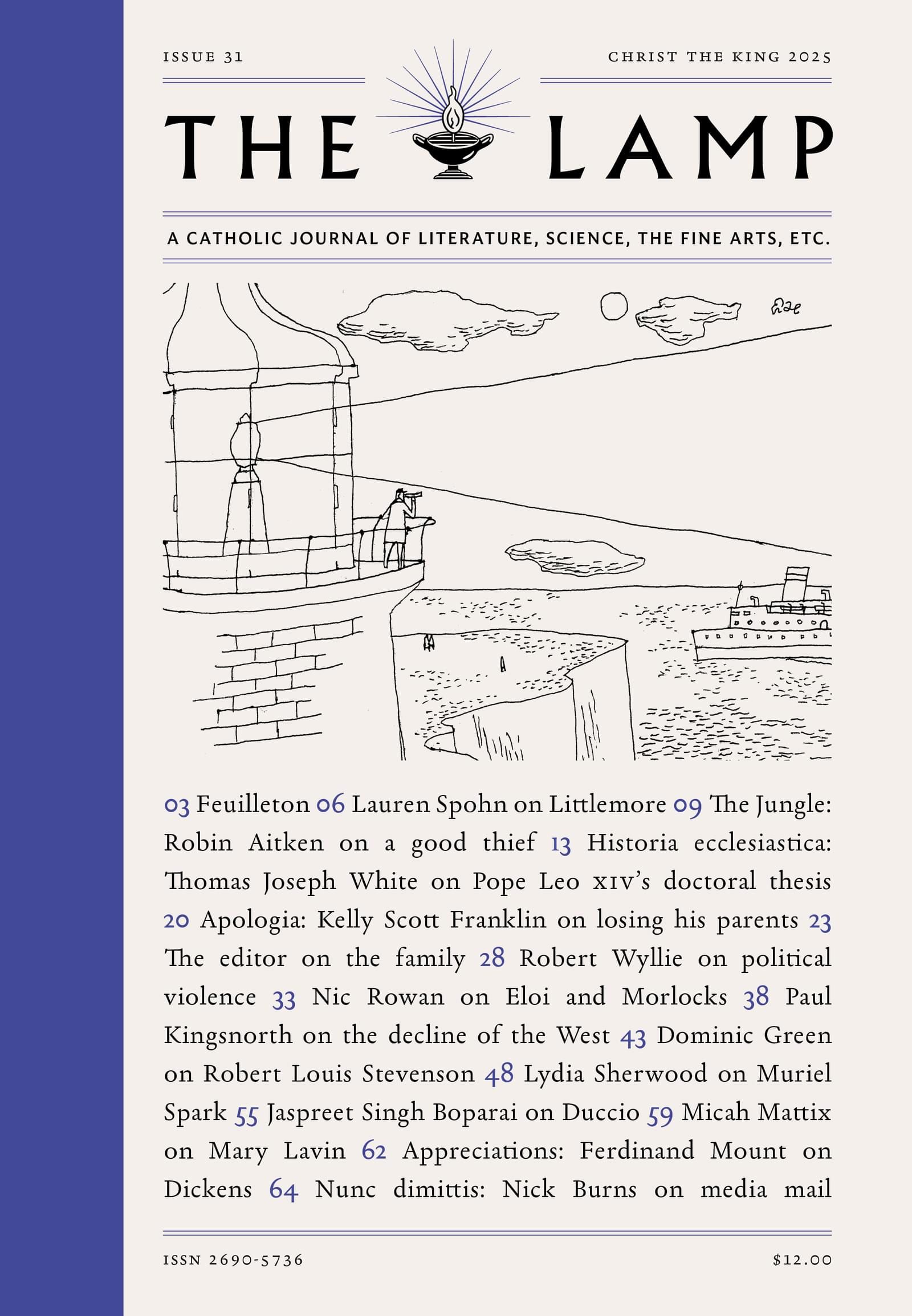I have started to read my eldest daughter The Hobbit. To my surprise, she loves it. I was the same age when my father read it to me, so maybe I should have expected it. But one of the stranger aspects of seventy years of institutionalized intergenerational strife is that you tacitly expect your kids to find the stuff you care about to be lame and dumb. It’s nice to know it doesn’t have to be the case.
An embarrassing amount of my personal development can be traced to two factors: being introduced to Tolkien very early, and all the magazines my parents had lying around the house. I trace my fascination with history and cartography and above all languages to the former; but The Weekly Standard made me a journalist.
I am one of the last lucky children who were introduced to Tolkien before his work became a mass-media “intellectual property” bonanza, so I was able to see it in all its strangeness rather than a substrate for complicated special-effects. The Lord of the Rings is a powerfully strange book in a purely literary way; the only work comparable to it is Pale Fire. Both are formally “found” works in an academic frame—the introduction and appendices in The Lord of the Rings, Botkin’s commentary in Pale Fire—describing in vast detail fictional worlds, Middle Earth and Zembla respectively. Nabokov is a more nimble fictionist than Tolkien, and so is more concerned with the narratological tricks the form allows—the notes to copy editors, the large and small disjunctures in Botkin’s narration, the wide gulf between the commentary and the text itself. But Tolkien is the greater philologist and historian, and his model world is a far sturdier thing than Botkin’s kingdom of the mind.
The strangeness of Tolkien, and his affinity for the agrarian, the small, the forgotten tradition, is why he became a favorite of the hippies. (“Frodo Lives!”) It is odd that he has become such a totem for the blue-blazered conservative class. It is odder, and more tragic, that his work has become a vehicle for Hollywood’s wicked designs on your attention and intellect. There is nothing more perverse than a Lord of the Rings video game. And, of course, the cash-grab approach to a literary estate means the old hobbyists (hobbitists?), the ones who meticulously recorded the incidence of Sindarin words and had learned arguments about the geology of the Misty Mountains, still have not gotten access to the vast troves of Tolkien’s linguistic and historical notes. Never let the things you love become popular.
As I read to my daughter, I am struck by the shabbiness of Tolkien’s world. Middle Earth is sparsely populated and dangerous; the roads are bad, cannibalism is a fact of life:
The piers are pummelled by the waves;
In a lonely field the rain
Lashes an abandoned train;
Outlaws fill the mountain caves.
Nor does the titular Return of the King promise much by way of material improvement; the royal capital of Minas Tirith undergoes a bit of what we might call “urban renewal,” but the great works are still things of the distant past. Liberty and relative peace are what’s on offer. As the poet said, you can never be strong; you can only be free. I have discovered in myself through the years an innate affinity for decay; perhaps this also was prompted, or at least developed, by these books.
I have spent many years now working in the real world. In college, I discovered that mine is not an academic temperament and set aside the dreams of philology or ancient history. Instead I’ve stuck to the humbler word-work of newsprint and the first draft of history, journalism. Yet as I read I realize there is a quiet music to which my ears have been tuned so long that I am not even conscious of hearing it which I first encountered here in Middle Earth—a curious, soaring music, the theme of a small person in a great world strewn with strange tongues and peoples, hearing rumors of faraway deeds, and wandering my own way along broken roads under the great disk of the sun.




